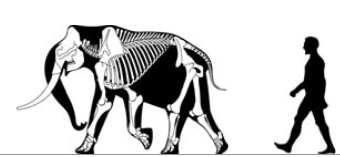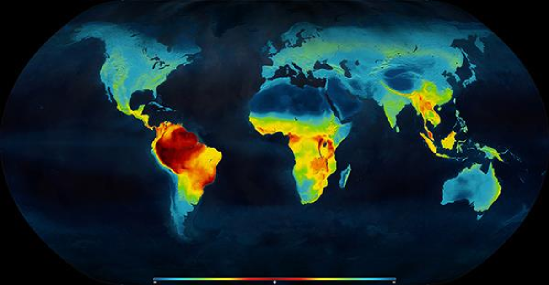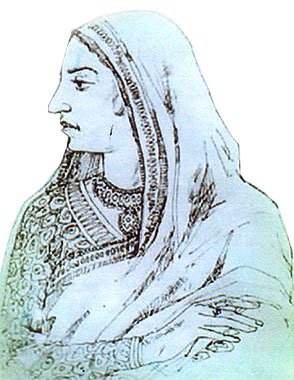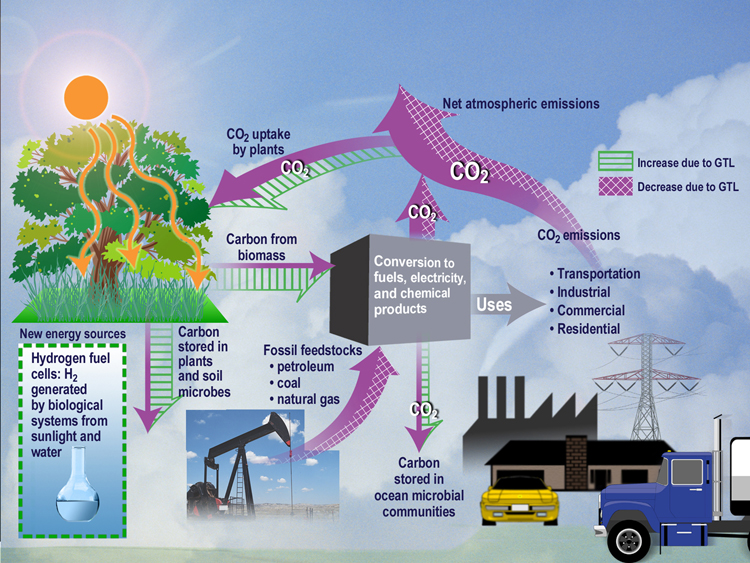|
Rapoport's Rule
Rapoport's rule is an ecogeographical rule that states that latitudinal ranges of plants and animals are generally smaller at lower latitudes than at higher latitudes. Background Stevens (1989) named the rule after Eduardo H. Rapoport, who had earlier provided evidence for the phenomenon for subspecies of mammals (Rapoport 1975, 1982). Stevens used the rule to "explain" greater species diversity in the tropics in the sense that latitudinal gradients in species diversity and the rule have identical exceptional data and so must have the same underlying cause. Narrower ranges in the tropics would facilitate more species to coexist. He later extended the rule to altitudinal gradients, claiming that altitudinal ranges are greatest at greater altitudes (Stevens 1992), and to depth gradients in the oceans (Stevens 1996Stevens, G. C. (1996). Extending Rapoport's rule to Pacific marine fishes. Journal of Biogeography 23:149–154.). The rule has been the focus of intense discussion and give ... [...More Info...] [...Related Items...] OR: [Wikipedia] [Google] [Baidu] |
Ecogeographical Rule
A biological rule or biological law is a generalized law, principle, or rule of thumb formulated to describe patterns observed in living organisms. Biological rules and laws are often developed as succinct, broadly applicable ways to explain complex phenomena or salient observations about the ecology and biogeographical distributions of plant and animal species around the world, though they have been proposed for or extended to all types of organisms. Many of these regularities of ecology and biogeography are named after the biologists who first described them. From the birth of their science, biologists have sought to explain apparent regularities in observational data. In his biology, Aristotle inferred rules governing differences between live-bearing tetrapods (in modern terms, terrestrial placental mammals). Among his rules were that brood size decreases with adult body mass, while lifespan increases with gestation period and with body mass, and fecundity decreases with life ... [...More Info...] [...Related Items...] OR: [Wikipedia] [Google] [Baidu] |
Latitude
In geography, latitude is a coordinate that specifies the north– south position of a point on the surface of the Earth or another celestial body. Latitude is given as an angle that ranges from –90° at the south pole to 90° at the north pole, with 0° at the Equator. Lines of constant latitude, or ''parallels'', run east–west as circles parallel to the equator. Latitude and ''longitude'' are used together as a coordinate pair to specify a location on the surface of the Earth. On its own, the term "latitude" normally refers to the ''geodetic latitude'' as defined below. Briefly, the geodetic latitude of a point is the angle formed between the vector perpendicular (or ''normal'') to the ellipsoidal surface from the point, and the plane of the equator. Background Two levels of abstraction are employed in the definitions of latitude and longitude. In the first step the physical surface is modeled by the geoid, a surface which approximates the mean sea level over the ocean ... [...More Info...] [...Related Items...] OR: [Wikipedia] [Google] [Baidu] |
Plant
Plants are predominantly photosynthetic eukaryotes of the kingdom Plantae. Historically, the plant kingdom encompassed all living things that were not animals, and included algae and fungi; however, all current definitions of Plantae exclude the fungi and some algae, as well as the prokaryotes (the archaea and bacteria). By one definition, plants form the clade Viridiplantae (Latin name for "green plants") which is sister of the Glaucophyta, and consists of the green algae and Embryophyta (land plants). The latter includes the flowering plants, conifers and other gymnosperms, ferns and their allies, hornworts, liverworts, and mosses. Most plants are multicellular organisms. Green plants obtain most of their energy from sunlight via photosynthesis by primary chloroplasts that are derived from endosymbiosis with cyanobacteria. Their chloroplasts contain chlorophylls a and b, which gives them their green color. Some plants are parasitic or mycotrophic and have lost the ... [...More Info...] [...Related Items...] OR: [Wikipedia] [Google] [Baidu] |
Animal
Animals are multicellular, eukaryotic organisms in the Kingdom (biology), biological kingdom Animalia. With few exceptions, animals Heterotroph, consume organic material, Cellular respiration#Aerobic respiration, breathe oxygen, are Motility, able to move, can Sexual reproduction, reproduce sexually, and go through an ontogenetic stage in which their body consists of a hollow sphere of Cell (biology), cells, the blastula, during Embryogenesis, embryonic development. Over 1.5 million Extant taxon, living animal species have been Species description, described—of which around 1 million are Insecta, insects—but it has been estimated there are over 7 million animal species in total. Animals range in length from to . They have Ecology, complex interactions with each other and their environments, forming intricate food webs. The scientific study of animals is known as zoology. Most living animal species are in Bilateria, a clade whose members have a Symmetry in biology#Bilate ... [...More Info...] [...Related Items...] OR: [Wikipedia] [Google] [Baidu] |
Eduardo H
Eduardo is the Spanish and Portuguese form of the male given name Edward. Another version is Duarte. It may refer to: Association football * Eduardo Bonvallet, Chilean football player and sports commentator * Eduardo Carvalho, Portuguese footballer * Eduardo "Edu" Coimbra, Brazilian footballer * Eduardo Costa, Brazilian footballer * Eduardo da Conceição Maciel, Brazilian footballer * Eduardo da Silva, Brazilian-born Croatian footballer * Eduardo Adelino da Silva, Brazilian footballer * Eduardo Ribeiro dos Santos, Brazilian footballer * Eduardo Gómez (footballer), Chilean footballer * Eduardo Gonçalves de Oliveira, Brazilian footballer * Eduardo Jesus, Brazilian footballer * Eduardo Martini, Brazilian footballer * Eduardo Ferreira Abdo Pacheco, Brazilian footballer Music * Eduardo (rapper), Carlos Eduardo Taddeo, Brazilian rapper * Eduardo De Crescenzo, Italian singer, songwriter and multi-instrumentalist Politicians * Eduardo Año, Filipino politician and retired army ... [...More Info...] [...Related Items...] OR: [Wikipedia] [Google] [Baidu] |
Mammal
Mammals () are a group of vertebrate animals constituting the class Mammalia (), characterized by the presence of mammary glands which in females produce milk for feeding (nursing) their young, a neocortex (a region of the brain), fur or hair, and three middle ear bones. These characteristics distinguish them from reptiles (including birds) from which they diverged in the Carboniferous, over 300 million years ago. Around 6,400 extant species of mammals have been described divided into 29 orders. The largest orders, in terms of number of species, are the rodents, bats, and Eulipotyphla (hedgehogs, moles, shrews, and others). The next three are the Primates (including humans, apes, monkeys, and others), the Artiodactyla ( cetaceans and even-toed ungulates), and the Carnivora (cats, dogs, seals, and others). In terms of cladistics, which reflects evolutionary history, mammals are the only living members of the Synapsida (synapsids); this clade, together with Saur ... [...More Info...] [...Related Items...] OR: [Wikipedia] [Google] [Baidu] |
Latitudinal Gradients In Species Diversity
Species richness, or biodiversity, increases from the poles to the tropics for a wide variety of terrestrial and marine organisms, often referred to as the latitudinal diversity gradient. The latitudinal diversity gradient is one of the most widely recognized patterns in ecology. It has been observed to varying degrees in Earth's past. A parallel trend has been found with elevation (elevational diversity gradient), though this is less well-studied. Explaining the latitudinal diversity gradient has been called one of the great contemporary challenges of biogeography and macroecology (Willig et al. 2003, Pimm and Brown 2004, Cardillo et al. 2005). The question "What determines patterns of species diversity?" was among the 25 key research themes for the future identified in 125th Anniversary issue of ''Science'' (July 2005). There is a lack of consensus among ecologists about the mechanisms underlying the pattern, and many hypotheses have been proposed and debated. A recent review n ... [...More Info...] [...Related Items...] OR: [Wikipedia] [Google] [Baidu] |
Chowdhury Ecosystem Model
Chowdhury is a title of honour, usually hereditary, originating from the Indian subcontinent. It is an adaption from Sanskrit. During the Mughal rule, it was a title awarded to eminent people, while during British rule, the term was associated with zamindars and social leaders. The common female equivalent was Chowdhurani. Many landlords under the Permanent Settlement carried this surname. Land reforms after the partition of India abolished the permanent settlement. In modern times, the term is a common South Asian surname for both males and females. Meaning and significance "Chowdhury" is a term adapted from the Sanskrit word ''caturdhara'', literally "holder of four" (four denoting a measure of land, from ''chatur'' ("four") and ''dhara'' ("holder" or "possessor")). The name is a Sanskrit term denoting the head of a community or caste. It was a title awarded to persons of eminence, including both Muslims and Hindus, during the Mughal Empire. It was also used as a title by mil ... [...More Info...] [...Related Items...] OR: [Wikipedia] [Google] [Baidu] |
Paul H
Paul may refer to: *Paul (given name), a given name (includes a list of people with that name) *Paul (surname), a list of people People Christianity *Paul the Apostle (AD c.5–c.64/65), also known as Saul of Tarsus or Saint Paul, early Christian missionary and writer *Pope Paul (other), multiple Popes of the Roman Catholic Church *Saint Paul (other), multiple other people and locations named "Saint Paul" Roman and Byzantine empire *Lucius Aemilius Paullus Macedonicus (c. 229 BC – 160 BC), Roman general *Julius Paulus Prudentissimus (), Roman jurist *Paulus Catena (died 362), Roman notary *Paulus Alexandrinus (4th century), Hellenistic astrologer *Paul of Aegina or Paulus Aegineta (625–690), Greek surgeon Royals *Paul I of Russia (1754–1801), Tsar of Russia *Paul of Greece (1901–1964), King of Greece Other people *Paul the Deacon or Paulus Diaconus (c. 720 – c. 799), Italian Benedictine monk *Paul (father of Maurice), the father of Maurice, Byzan ... [...More Info...] [...Related Items...] OR: [Wikipedia] [Google] [Baidu] |
Thorson's Rule
Thorson's rule (named after Gunnar Thorson by S. A. Mileikovsky in 1971) Mileikovsky, S. A. 1971. ''Types of larval development in marine bottom invertebrates, their distribution and ecological significance: a reevaluation.'' Marine Biology 19: 193-213 is an ecogeographical rule which states that benthic marine invertebrates at low latitudes tend to produce large numbers of eggs developing to pelagic (often planktotrophic lankton-feeding/nowiki>) and widely dispersing larvae, whereas at high latitudes such organisms tend to produce fewer and larger lecithotrophic (yolk-feeding) eggs and larger offspring, often by viviparity or ovoviviparity, which are often brooded.Thorson, G. 1957 Bottom communities (sublittoral or shallow shelf). In "Treatise on Marine Ecology and Palaeoecology" (Ed J.W. Hedgpeth) pp. 461-534. Geological Society of America. Groups involved The rule was originally established for marine bottom invertebrates, but it also applies to a group of parasitic flatworm ... [...More Info...] [...Related Items...] OR: [Wikipedia] [Google] [Baidu] |
Biantitropical Distribution
Antitropical (alternatives include biantitropical or amphitropical) distribution is a type of disjunct distribution where a species or clade exists at comparable latitudes across the equator but not in the tropics. For example, a species may be found north of the Tropic of Cancer and south of the Tropic of Capricorn, but not in between. With increasing time since dispersal, the disjunct populations may be the same variety, species, or clade. How the life forms distribute themselves to the opposite hemisphere when they can't normally survive in the middle depends on the species; plants may have their seed spread through wind, animal, or other methods and then germinate upon reaching the appropriate climate, while sea life may be able to travel through the tropical regions in a larval state or by going through deep ocean currents with much colder temperatures than on the surface. For the American amphitropical distribution, dispersal has been generally agreed to be more likely than vi ... [...More Info...] [...Related Items...] OR: [Wikipedia] [Google] [Baidu] |
Systems Ecology
Systems ecology is an interdisciplinary field of ecology, a subset of Earth system science, that takes a holism, holistic approach to the study of ecological systems, especially ecosystems. Systems ecology can be seen as an application of general systems theory to ecology. Central to the systems ecology approach is the idea that an ecosystem is a complex system exhibiting emergent properties. Systems ecology focuses on interactions and transactions within and between biological and ecological systems, and is especially concerned with the way the functioning of ecosystems can be influenced by human interventions. It uses and extends concepts from thermodynamics and develops other macroscopic descriptions of complex systems. Overview Systems ecology seeks a Holism, holistic view of the interactions and transactions within and between biological and ecological systems. Systems ecologists realise that the function of any ecosystem can be influenced by human economics in fundamental ... [...More Info...] [...Related Items...] OR: [Wikipedia] [Google] [Baidu] |





